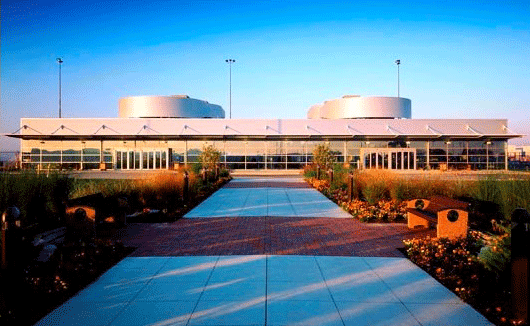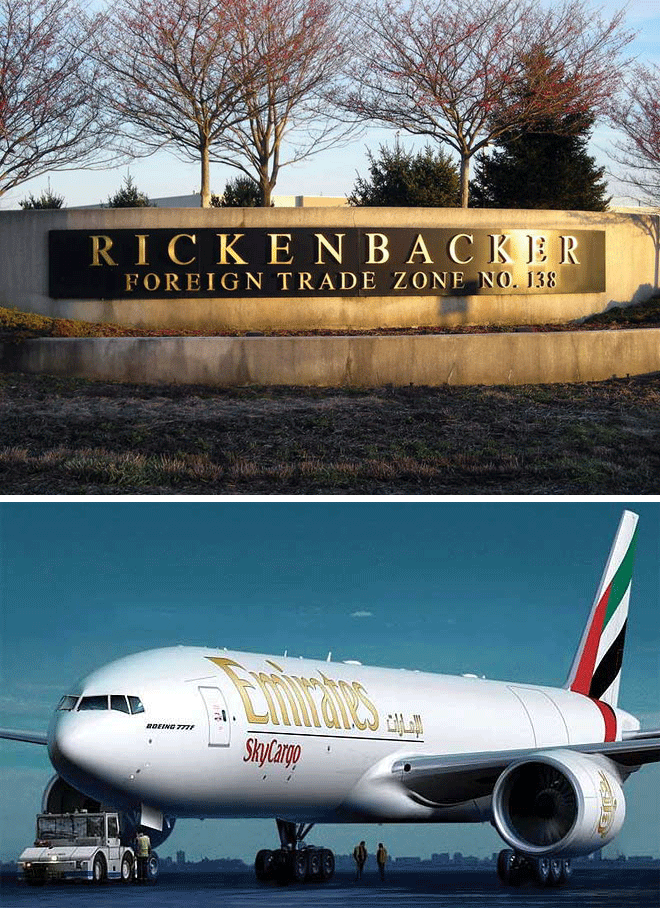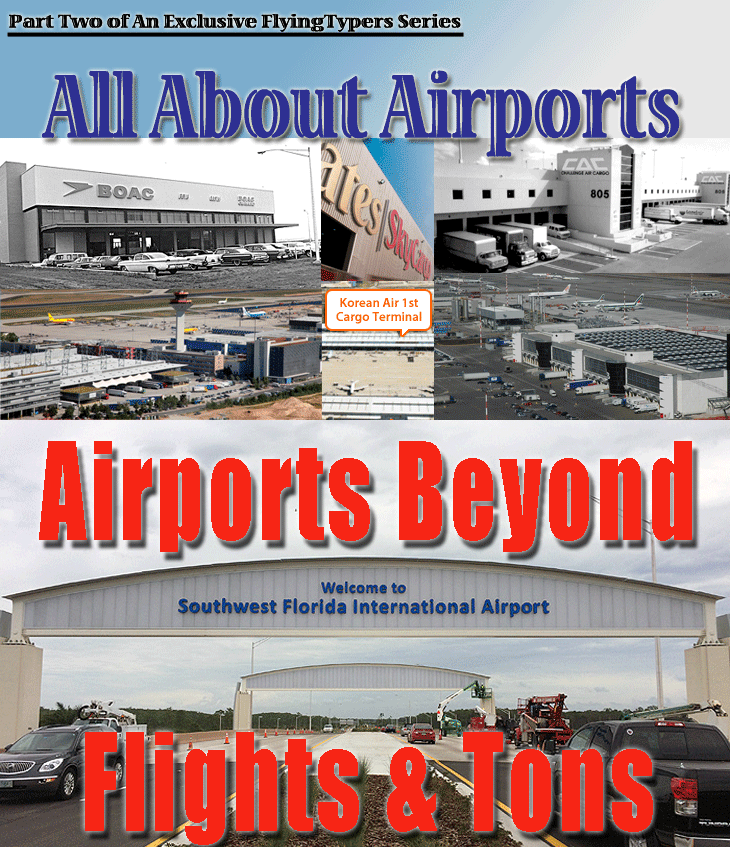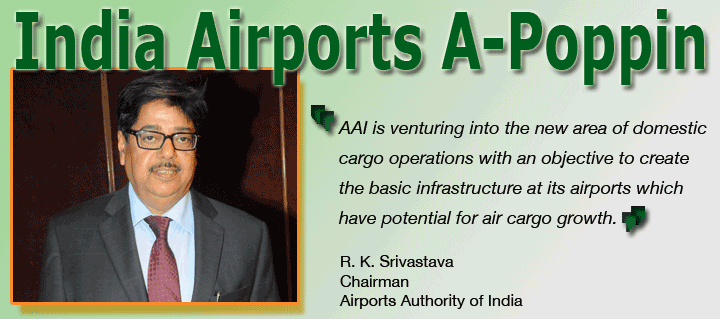 |
 |
 #INTHEAIREVERYWHERE |
| Vol. 15 No. 64 | Monday
August 22, 2016 |
Port
Columbus International Airport is centrally located
in Ohio as home to a diverse mix of air carriers. The Challenge Airports
often struggle to justify and fund projects related
to air cargo. They face the challenges of large capital
needs and limited dollars, opposition to airport expansion,
or lack a cohesive vision for freight.
Building Partnerships Large
airport improvement programs typically involve governmental
engagement on a federal, state, city, township, and
village-level, navigating the varied interests of elected
officials and constituents across multiple jurisdictions.
Fortunately, elected officials are aware that local
businesses fuel their economies and the jobs they create
keep their constituents happy. If everyone works towards
the common goal of attracting new businesses, adding
jobs and income tax dollars, partnerships can become
very desirable to all parties, including area businesses.
As warehouses sprung up and more freight moved through
the Rickenbacker area, it became clear that the next
priority would be improving the surrounding roadway
system. Beyond Expectations When
the recession hit the U.S. in 2008-2009, everything
came to a screeching halt. Airport business was down,
retail business was down, and no one was investing in
new construction or expanding warehouse operations.
In the midst of the doom and gloom, hundreds of civic-minded
leaders within the Central Ohio community came together
to brainstorm ways to collaborate and leverage resources
in order to create jobs and dig out of the financial
doldrums. Celebrating Success While
air carriers and shippers are fairly nimble and able
to jump in and out of markets in relatively short timeframes,
the infrastructure required to support freight operations
is fixed at the airport and often subject to planning
horizons that stretch for decades. Unlike the landside
roadway infrastructure upgrades, the cost of which is
shared by multiple public sources, the airside is traditionally
the airport’s sole responsibility to develop.
In
order to tackle the issue, a true public/private dialog
was started in 2014 supported by Columbus2020 and with
collaboration between the airport and local shipping
interest. Traditional 3rd party developers were sought
out to construct the new building, but remained focused
on traditional gateways; therefore stakeholders came
up with an alternate solution. The new Rickenbacker
cargo terminal was constructed via a land lease to a
non-traditional entity backed by a large international
shipper willing to share the risks in support of a broader
regional vision. Like traditional 3rd party development
arrangements, the building owner would be responsible
for tenant leasing while keeping the vision that the
facility would be open for all comers to utilize through
a single terminal operator. An Airport Thinking Beyond Air The
air cargo industry knows that air freight accounts for
less than 10 percent of the volume of international
trade. This makes ocean connectivity just as important
to the airport in order to help regional business meet
all of their transportation needs. Looking At Tomorrow Today
the Rickenbacker area boasts nearly 70 million square
feet (6.5 million square meters) of warehouse, distribution,
and air cargo space concentrated within a few short
miles of the airport runways. The success that businesses
and freighter operators have found through Rickenbacker
could not have been accomplished without strong partnerships
and efforts of a broader-than-usual number of diverse
players. Those public/private partnerships formed to
tackle development challenges continue to lead us toward
future growth opportunities.
|
 |
 |
The government-controlled
Airports Authority of India (AAI) has, at last, woken
up to the potential of air cargo in the country. In
a move that could change the manner in which AAI goes
about its business, AAI has chalked out a strategy for
air cargo. AAI Chairman R. K. Srivastava was candid
enough to point out that the cargo business “had
not been attended to in the last 60-70 years…
It has been ignored for too long.” |
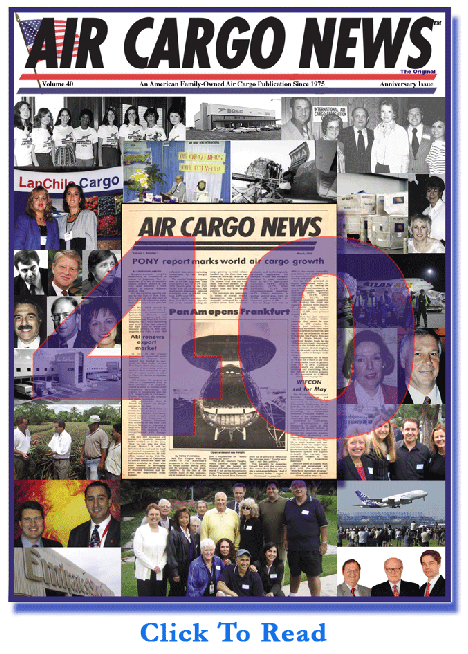 |
If
You Missed Any Of The Previous 3 Issues Of FlyingTypers
Access complete issue by clicking on issue icon or Access specific articles by clicking on article title |
||
 Vol. 15 No. 61 Jet To Walmart Surcharges And Rates In August Chuckles For August 10, 2016 Upside Cargo Land Over Yonder Art Of IAG Singh A Song Of Mumbai CargoChicago Air And Water Show |
 Vol. 15 No. 62 Express Delivery XLA Sets ACIA Cooling Their Brakes Chuckles For August 15, 2016 Is Freightos The Next Big Thing? InstaClassic Chicago Not Lion—This Really Happened |
|
Publisher-Geoffrey
Arend • Managing Editor-Flossie Arend • Film Editor-Ralph Arend • Special Assignments-Sabiha Arend, Emily Arend • Advertising Sales-Judy Miller |
|


